Warhammer 40,000: Dawn of War Video Game Series
Warhammer 40,000: Dawn of War is a series of real-time strategy (RTS) games set in a dark and brutal world of the far future. The development of the series is handled by the Canadian studio Relic Entertainment, while the role of publisher starting with part three is fulfilled by SEGA (previously handled by THQ).
The series was born in 2004 with the release of Warhammer 40,000: Dawn of War. Two content-rich expansions appeared in the following two years: Winter Assault (2005) and Dark Crusade (2006). The third and final expansion (as the only one in the history of the series created by another company - Iron Lore Entertainment) appeared in 2008 and was called Soulstorm. The second full-fledged installment of the series, Warhammer 40,000: Dawn of War II, was released in 2009 and brought with it a significant change in the nature of the gameplay, making it more tactical. The production lived to see two expansions: Chaos Rising (2010) and Retribution (2011). For the release of part three fans had to wait until 2017: Warhammer 40,000: Dawn of War III represented an attempt to return to the roots of the series.
All titles were set in the dark and brutal universe of the Warhammer 40,000 (otherwise known as WH40K), developed in 1987 by Games Workshop for board battle games. The world is a futuristic counterpart to the earlier universe, which used a fantasy atmosphere and first appeared as a story background for a battle board game Warhammer Fantasy Battle.
The action of the games in the series Dawn of War takes place in the distant future, around the 40th millennium. Centuries ago, mankind had already managed to colonize many planets and, with the help of extremely advanced technology, to create a true interstellar superpower. However, unexpected events and unforeseen wars ruined the prosperous civilization and threw its inhabitants back into the darkness of barbarism, cruelty and division. Reunification became possible only through the efforts of the Emperor - an extraordinary leader of great intelligence and power. With the help of a loyal army, he subjugated first the entire Earth and then the human colonies scattered across the cosmos, creating an entirely new superpower: the Empire of Mankind. The Emperor was mortally wounded during a civil war unleashed by one of his top commanders, Horus. To save the monarch's life, the Emperor's servants placed him in the so-called Golden Throne, a mysterious device from the technological heyday of humanity. The Golden Throne has already kept the Emperor's decaying body alive for more than ten thousand years, while united humanity professes him as the supreme god and immortal ruler and protector of the human race. Genetically modified super-soldiers, known as Space Marines, as well as ordinary members of the imperial war machine fight and die every day with the Emperor's name on their lips, fervently believing that their only purpose in life is to fight the enemies of the immortal monarch.
Life in the world of Dawn of War is neither easy nor pleasant. The Empire of Humanity is an oppressive and brutal theocratic regime, characterized by merciless treatment of representatives of other races and species as well as its own citizens. Military commanders have no qualms about sacrificing their soldiers and using immediate execution as punishment for cowardice. Deviation from belief in the Emperor's god is not tolerated, and being a mutant or a member of an alien race automatically qualifies for extermination. The situation is not improved by numerous and deadly external threats: attacks by warlike Orcs, monstrous Tyranids and Nekrons, and the machinations of the demonic forces of Chaos. The vision of the future portrayed by the titles in the series Dawn of War is a dark and pessimistic world in which only war exists.
The first part of the series allowed us to fight for the safety of the Empire in a gameplay model very reminiscent of classic RTS strategies. In order to field a land army, the player had to construct a base and ensure its supply of raw materials. The constructed outposts consisted of command centers, recruitment and production facilities, structures for developing improvements, and defensive fortifications. The raw materials were two: requisition points and energy. With these, players could summon infantry troops, walking machines, heavy tanks, hovercraft, and artillery vehicles to the battlefield. Troops could be upgraded in the field with new soldiers, special units adding certain bonuses, or by replacing members' standard armaments with flamethrowers, sniper rifles or rocket launchers.
Part two brought with it significant changes in mechanics. While the game remained in the real-time strategy category, the gameplay was stripped of most of the base-building elements, with RPG-like themes taking its place. During missions, we commanded elite squads consisting of plot-important characters and the guard that protected them. Each of the heroes had unique abilities, such as temporary invisibility, planting explosive charges, throwing fragmentation or stun grenades, devastating charges or healing items. In the locations we visited, we had the opportunity to find new armor and a variety of weapons. We also managed the development of the heroes in terms of their statistics, being able to improve their health, strength or effectiveness in ranged combat.
Released in 2017, the third part was an attempt to return to the mechanics of the original. Base building and training units in specific structures returned to the game. Ordinary troops and vehicles were joined by incredibly powerful heroic units, which were capable of single-handedly decimating advancing enemy forces. Both heroes and regular army units could receive upgrades called doctrines, which provided new skills or bonuses on the battlefield. This allowed players to tailor their forces to their preferred style of gameplay. At the time of the release of DoW III enabled play using three factions from the universe of WH40K: Space Marines in the service of the Human Empire, the mysterious elven-like Eldar, and the Orcs, who delight in war and destruction.
The first and second installments of the series were highly rated by both industry reviewers and gamers. The third installment received only mildly lower ratings among critics, but was heavily criticized by some players. Among the recurring objections were accusations of trying to approximate the gameplay to the MOBA genre and abandoning the dark atmosphere of the universe in favor of colorful visuals. Ratings on metacritic.com were as follows for each of the three main installments of the series (according to critics - according to users): 86/100 - 8.7/10 for Dawn of War, 85/100 - 8.1/10 for Dawn of War II and 77/100 - 4.7/10 for Dawn of War III (as of 12/08/2017).
Warhammer 40,000: Dawn of War Series Evolution
2017
Warhammer 40,000: Dawn of War III
2009
Warhammer 40,000: Dawn of War II
2004
Warhammer 40,000: Dawn of War
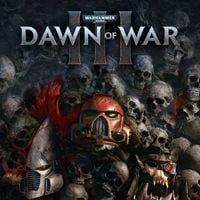
Warhammer 40,000: Dawn of War III
Strategy
April 27, 2017
Developed by Relic Entertainment, the third installment of the real-time strategy set in a dark science fiction world. The action of Warhammer 40,000: Dawn of War III once again takes us to the popular universe created by Games Workshop. During gameplay you can lead one of the three available races: Space Marines, Eldars, and Orks. Each of them has unique heroes, units, buildings, and abilities. Mechanically, the title combines the best solutions from the previous parts of the franchise and concentrates on spectacular battles waged on vast maps with hundreds of units. The game features RPG elements, such as customization of units and heroes that can be provided with special equipment and abilities obtained with the increase of experience. The title utilizes a modern graphics engine which offers attractive, 3D visuals and large-scale environment destruction.
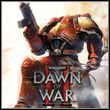
Warhammer 40,000: Dawn of War II
Strategy
February 19, 2009
A sequel to the popular real-time strategy game by Relic Entertainment, set in the cult Warhammer 40,000 universe, where over a dozen feuding factions fight a bloody war. In the story campaign, we can assume control of the armies of four sides of the conflict: humans (Space Marines), Orks, the Eldar, and the Tyranids. Contrary to its predecessor, in Dawn of War II we have a much larger freedom in terms of playing and can determine the order of conquest. Moreover, every mission ends with a fight against a so-called boss who is more resistant to damage and has more powerful attacks at his disposal. In the title, we command units that usually consist of only several troops, which serves to strengthen the tactical side of the gameplay and the way players bond with their subordinates. As we progress, the experience level of our armies also rise, thanks to which they can perform increasingly better on the battlefield.
- Warhammer 40,000: Dawn of War II - Chaos Rising March 11, 2010
- Warhammer 40,000: Dawn of War II - Retribution March 1, 2011
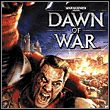
Warhammer 40,000: Dawn of War
Strategy
September 20, 2004
A real-time strategy which takes place in the Warhammer 40,000 universe. The game was released as a result of cooperation between the publisher THQ and Relic Entertainment, the studio known for Homeworld, among other games. The story of Dawn of War focuses on one of the many conflicts in the world of Warhammer. It focuses on Gabriel Angelos – the leader of Blood Ravens chapter of the Space Marines - who tries to stop an Ork invasion on his planet. Similarly as in the majority of real-time strategies, the essence of the game is leading troops during combat. Thanks to the unique setting and various futuristic weapons, the battles are spectacular and very brutal. The game lacks the typical resource gathering element, usually used for improving the base. Instead, the resource system was based on conquering and controlling key locations. The way how units look is worth mentioning – they are based on authentic figurines created by Games Workshop.
- Warhammer 40,000: Dawn of War - Winter Assault September 19, 2005
- Warhammer 40,000: Dawn of War – Dark Crusade October 9, 2006
- Warhammer 40,000: Dawn of War - Soulstorm March 4, 2008
Warhammer 40,000: Dawn of War Series News
![Warhammer 40K: Dawn of War 2 With Survival Co-op Thanks to Elite Mod [Update: version 2.9.11 is out]](https://cdn.gracza.pl/i_gp/h/16/424173190.jpg)
Warhammer 40K: Dawn of War 2 With Survival Co-op Thanks to Elite Mod [Update: version 2.9.11 is out]
A new version of the Elite Mod project, one of the most important mods for Warhammer 40,000: Dawn of War II - Retribution, has been released. Among other things, the project has recently gained new skirmish modes and a survival variant for solo or co-op play.
Files and Mods
Adrian Werner
April 9, 2024
![Eternal Mod for Warhammer 40K: Dawn of War 2 Launches; Project Reimagines Iconic Strategy [UPDATE]](https://cdn.gracza.pl/i_gp/h/16/420820124.jpg)
Eternal Mod for Warhammer 40K: Dawn of War 2 Launches; Project Reimagines Iconic Strategy [UPDATE]
Eternal, a fan-made expansion for Warhammer 40K: Dawn of War II, gives the fans of this popular strategy game an excellent reason to return to the world of Relic Entertainment's game.
Files and Mods
Kamil Kleszyk
May 7, 2023
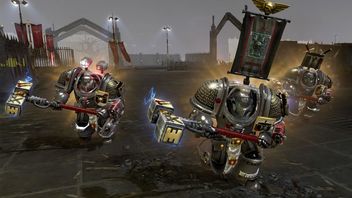
Elite Mod for Warhammer 40K: Dawn of War 2 Version 2.9.8.3 Launches
Elite Mod, one of the most important modifications to Warhammer 40,000: Dawn of War II - Retribution, has received a new version.
Files and Mods
Adrian Werner
November 1, 2022
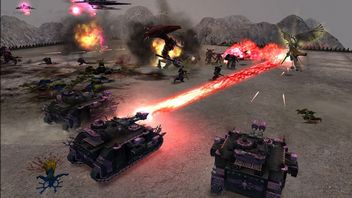
Redux Mod - New Version of Fan Remaster of Dawn of War - Soulstorm
A new version of Redux Mod, one of the most popular modifications for Warhammer 40,000: Dawn of War - Soulstorm, was released. The project improves both the graphics and the gameplay of this RTS.
Files and Mods
Adrian Werner
January 21, 2022
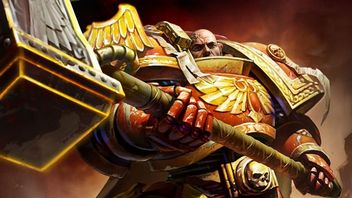
Warhammer 40K: Dawn of War 2 Vengeance of the Blood Ravens Mod With New Version
Version 3.3 of Vengeance of the Blood Ravens, one of the most interesting mods for the RTS Warhammer 40,000: Dawn of War II - Retribution, has been released.
Files and Mods
Adrian Werner
December 9, 2021
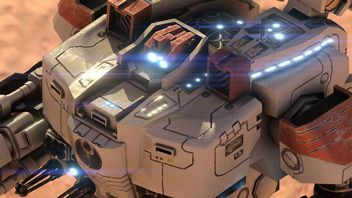
Ultimate Apocalypse - New Version of Popular Warhammer 40,000: Dawn of War Soulstorm Mod
A new version of Ultimate Apocalypse, one of the most popular mods for Warhammer 40,000: Dawn of War - Soulstorm, has been released. It introduces, among other things, compatibility with a fan-made Tyranid faction.
Files and Mods
Adrian Werner
July 19, 2021